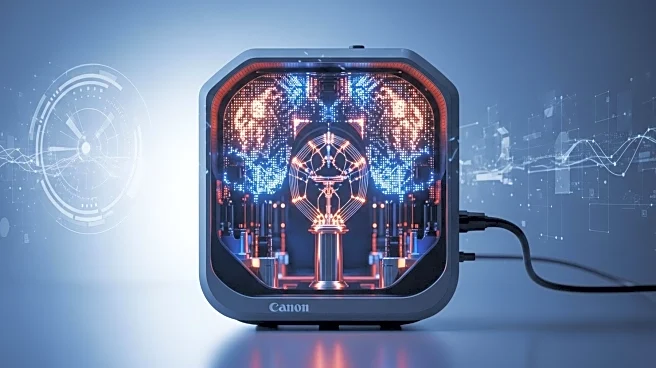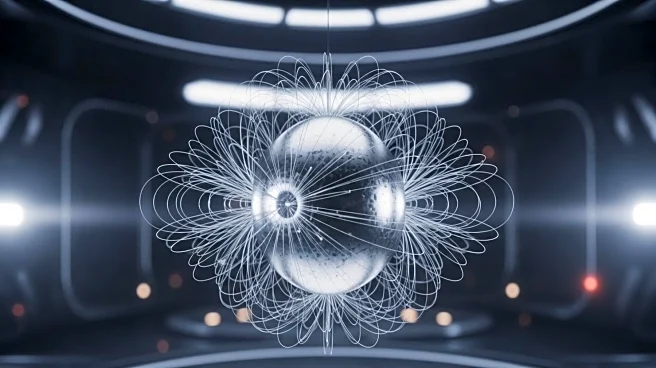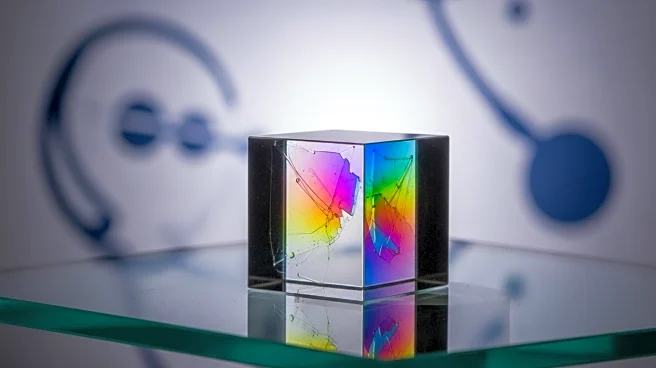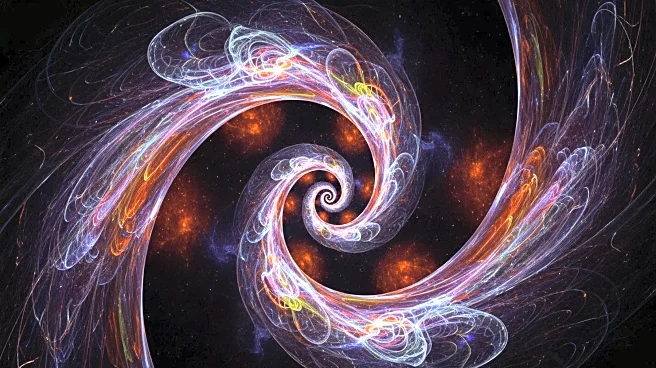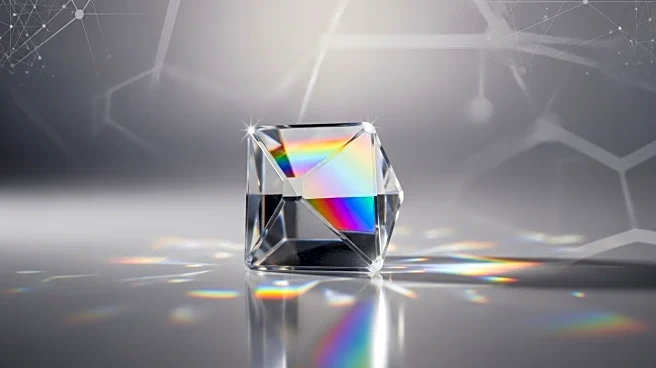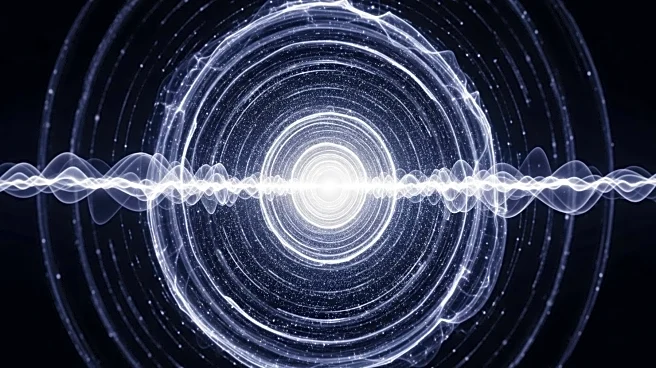What's Happening?
A recent study published in Nature details the temporal characterization of tunable few-cycle vacuum ultraviolet (VUV) pulses. Researchers utilized resonant dispersive wave emission during soliton self-compression in a capillary to generate VUV pulses with microjoule-energy, tuned between 160 and 190 nm. The study employed frequency-resolved optical gating based on two-photon photoionization in noble gases to characterize the temporal profile of these pulses. The method involved recording the delay-dependent kinetic energy distribution of photoelectrons resulting from non-resonant two-photon ionization of an atomic gas target. The retrieved pulse shapes and spectral phases were found to accurately reproduce the known input shapes, as indicated by low root-mean-square field errors. This research provides insights into the generation and characterization of VUV pulses, which are crucial for various applications in spectroscopy and photonics.
Why It's Important?
The ability to accurately characterize VUV pulses is significant for advancements in spectroscopy and photonics, impacting fields such as material science and quantum technology. VUV pulses are essential for probing electronic transitions and molecular dynamics with high precision. This study's findings could enhance the development of new spectroscopic techniques and improve the understanding of ultrafast processes in complex systems. Industries involved in laser technology and photonics stand to benefit from these advancements, potentially leading to more efficient and precise measurement tools. The research also contributes to the broader field of quantum technology, where precise control and characterization of light pulses are critical for developing quantum computing and communication systems.
What's Next?
Future research may focus on refining the techniques used for VUV pulse characterization and exploring their applications in other areas of science and technology. The study opens avenues for further investigation into the interaction of VUV pulses with different materials and their potential use in quantum-enhanced spectroscopy. Researchers might also explore the scalability of these methods for industrial applications, aiming to integrate them into commercial spectroscopic equipment. Collaboration between academic institutions and industry could accelerate the development of new technologies based on these findings, potentially leading to breakthroughs in fields reliant on precise light pulse measurements.
Beyond the Headlines
The study highlights the importance of interdisciplinary approaches in advancing scientific knowledge. The integration of quantum mechanics and photonics in this research exemplifies how combining different scientific domains can lead to innovative solutions. Ethical considerations may arise regarding the use of advanced spectroscopic techniques in sensitive areas such as environmental monitoring and security. Ensuring responsible use and addressing potential privacy concerns will be crucial as these technologies become more widespread.


